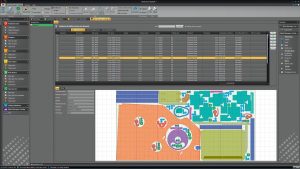 The addition of a Fiber laser cutting machine into a sheet metal fabrication manufacturing process requires a re-assessment of the current front-end fabricating processes. You now have a cutting tool that can produce two-to-four times more parts per unit of time. Naturally, all of the supporting systems will feel the effects both before and after the Fiber laser cutting process. Understanding this dynamic will help to eliminate potential bottlenecks in your front-end fabrication processes.
The addition of a Fiber laser cutting machine into a sheet metal fabrication manufacturing process requires a re-assessment of the current front-end fabricating processes. You now have a cutting tool that can produce two-to-four times more parts per unit of time. Naturally, all of the supporting systems will feel the effects both before and after the Fiber laser cutting process. Understanding this dynamic will help to eliminate potential bottlenecks in your front-end fabrication processes.
Since most small companies typically have one shift of front office staff, it becomes even more critical to automate the front-end fabrication processes to maintain the workflow to the Fiber laser cutter. This is especially true when the Fiber laser operates on multiple shifts. Automating the front-end fabrication processes (order entry, scheduling, material planning and inventory, engineering and programming) is critical to maintaining consistency in operations, especially in multi-shift operations.
[New to Fiber lasers? Learn more about adapting to Fiber technology.]
Automating front-end processes to maintaining consistency
Many companies employ some sort of order management system and/or ERP system to manage their production. The question is how quickly can an order be translated into a job that is ready to be processed? This is often a bottleneck as the Fiber laser is able to produce parts faster than they can be queued in the production pipeline. Once jobs have been released to production, the nesting software needs to create the programs to process jobs on the Fiber laser. Automating this process is the key to consistency and ensures that the Fiber laser is always cutting rather than waiting for programs.
Maximizing material utilization reduces costs per part
Utilizing an order management system maximizes the selection of parts and distributes all the orders that have been released by the ERP system efficiently to the various cutting plans based on material type, thickness, and due dates. If the single part program does not exist, then the DXF of the part is identified and automatically converted to a single part program. Scheduling can be defined by the customer based on the due date or job priority. The triggering of a job can be delayed until the clearly defined latest possible point in time while still guaranteeing assured delivery deadlines.
In addition to creating timely nests, programming systems must also consider sheet material utilization as this is a key element in the overall cost per part. With material costs making up 50% to 75% of the total cost per part, a programming system must take into consideration the ability to optimize material utilization. Cutting plans can be automatically released to the machines based on achieving required material yields. This leads to more parts per sheet and better material utilization. By combining orders into like materials and thickness, better yields can be achieved due to the higher volume of parts and their differing geometries.
Utilizing an Order Management System to streamline the front-end process
By utilizing an Order Management System, companies have streamlined the entire front-end process by interfacing with their existing ERP (Enterprise Resource Planning) system and processing their parts automatically from incoming orders to finished part nests. The benefit of systems for managing orders is that they are working 24/7, creating jobs as quickly as they are released by the ERP system. Nests are created automatically based on the job due dates and are released to the Fiber laser cutting machine only upon achieving the required material utilization.
Success Story: Morgan Li manufactures retail and hospitality fixturing. The highest-ranked manufacturer (#12) on Crain’s Chicago Business’ 2017 ‘Fast 50’ used Fiber laser technology to move their business to the next level.
By Frank Arteaga, Head of Product Marketing, NAFTA Region Bystronic Inc., Elgin, IL – Voice.bystronic@bystronic.com
